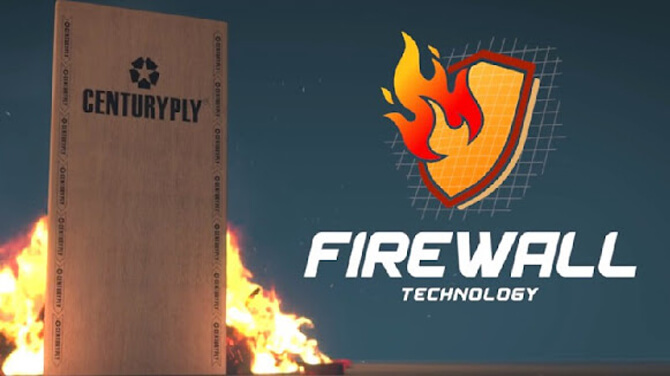What one element has the power to reduce tall skyscrapers to rubble? That is fire. There have been tragic fire catastrophes that we have heard of or seen. Particularly in metropolitan locations where residential areas are congested, there is a significant risk of fire spreading and resulting in the loss of life and property.
Therefore, we must consider safety while we build our home and its inside. While focusing on utility or other vital factors, we frequently neglect such crucial factors.
Plywood is used to construct our homes, offices, and commercial buildings. A small alteration in the plywood we use can make a significant difference in terms of safety. Manufacturers of plywood have innovated as a result of this safety need. The firewall technology used in plywood is one such advancement. The probability of fire mishaps can be reduced with the use of this technology.
Is plywood always fire-retardant?
By now, you should be aware that all plywood is regrettably not fire-retardant and does not adhere to strict fire codes. You should be careful to pick plywoods that are fire-retardant while you are hunting for them.
A fire-retardant plywood signifies that it complies with all fire code safety requirements. You can be confident that your investment in a material is truly reducing the likelihood of catastrophic fire-related accidents. While formerly people didn’t worry about fire, the rise of awareness encourages people to make decisions that can prevent long-term consequences.
What is the distinction?
Why bother with fire-retardant plywood, one could ask? People who value safety, as well as function and appearance, should be aware of such plywood gradations. Everyone should be concerned about safety, especially when it comes to our own homes.
Accidental fires are unfortunate, but they may be handled carefully. I’ll explain the benefits of plywood that has been fire-rated.
1. Using nano-engineered particles that are fire resistance
Special nanoparticles are used in the engineering of fire-retardant plywood. These particles either resist ignition or slow down the spread of fire. This helps to stop the fire from spreading and provides enough time for someone to get away and find safety. This might not be the case with other types of common plywood. Its structure won’t be able to resist fire and would be easily engulfed in flames.
2. Slow fire penetration rate
Engineered plywood that has a slow penetration by fire cannot be burned down easily. In the meanwhile, this aids in evacuation. Additionally, it prevents the fire from spreading quickly. Rescue efforts can save both lives and property if they are launched quickly.
3. Non-hygroscopic substances
Because these plywoods are water resistant, they also take in relatively little moisture from their surroundings. This prevents the hardware component from corroding as a result of the presence of specific chemicals.
4. Flame spread
Flame spread is a statistic used to assess how well plywood burns on its surface. fire-retardant plywood must pass stringent tests to assure that, should a fire start, it won’t spread as quickly as with regular plywood.
5. Less release of hazardous gasses
Burning regular plywood would produce harmful fumes and more smoke. This may help with poisoning and suffocation in the burning area. However, fire-retardant plywood is coated with a combination of chemicals that prevents the emission of as much smoke or harmful fumes. This avoids suffocation-related fatalities.
Conclusion
Precaution is always preferable to cure, as the saying goes. Therefore, it is essential to take preventative measures before beginning any building, such as utilizing fire-retardant plywood. This modern-day plywood can be an investment in your family’s and home’s protection. Both indoor and outdoor applications of plywood are possible.
A home is also for our safety along with security and for that careful consideration should be given to the materials that we use. When you purchase plywood the next time, pick up the fire-rated ones, especially from premium companies like CenturyPly that works with firewall technology at no extra costs.
Also check – The Best Waterproof Plywood for You




March 23, 2023
[…] Also check – Is All Plywood Fire-Retardant? What’s the Difference? […]